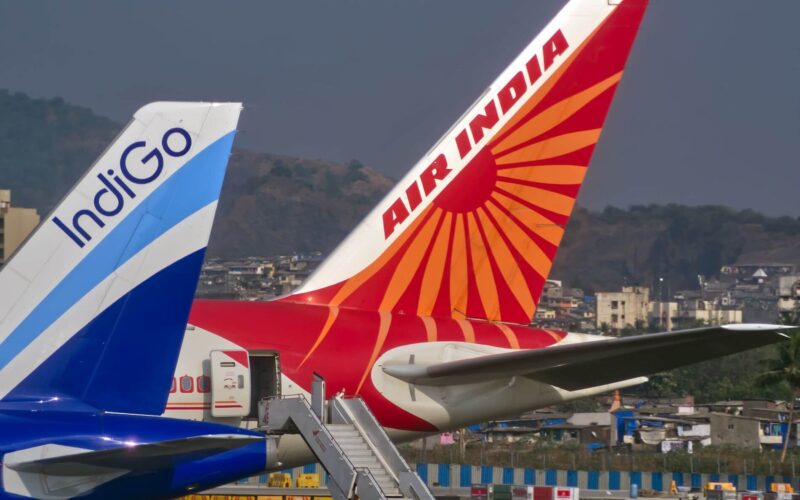We all know the Big Three of the Middle East: Emirates, Etihad Airways, and Qatar Airways. The Big Three of China are also well known: China Southern Airlines (ZNH), China Eastern Airlines (CIAH) (CEA), and Air China. Sometimes the largest airlines from the United States are referred to as the Big Three: American Airlines (A1G) (AAL), United Airlines, and Delta Air Lines, although Southwest is often attached too, making it the Big Four.
What about India? What airlines could be considered as India’s Big Three and has their order been changed by the COVID-19 pandemic? Let’s take a look.
There are a dozen airlines of Indian origin conducting scheduled flights – not counting regional, charter and cargo ones. Out of them, IndiGo is quite obviously the largest one, with SpiceJet, Air India, GoAir, Air Asia India and Vistara trailing behind.
There are several measures by which an airline’s size could be measured. If we start from the market share, the result is rather obvious:
Low-cost carrier IndiGo dominates, occupying more than half of the Indian market. SpiceJet, Air India and GoAir all have around one-tenth of the share. Air Asia India and Vistara have 6.9% and 6.3%, so, there is little point in including those two into our comparison.
Based on this comparison, we don’t have the Indian Big Three – only the Big One and a bunch of small ones.
But the share is largely dependent on the number of flights being conducted. If we look at the data from Radarbox, it becomes clear that IndiGo is the most active in terms of traffic.
IndiGo’s load factor (72.2% in 2020, according to DGCA) was also very high, second only to SpiceJet’s (78%). As a result, the airline carried much more people than smaller ones, securing the dominant position.
But the amount of passengers is only one possible measure. What about the fleet?
The disparity here is smaller too, and there is some reshuffling. IndiGo, being a typical low-cost airline, operates almost exclusively the Airbus A320 family of jets (not counting several ATR-72s). GoAir is even more focused on the A320. SpiceJet’s fleet is more varied, with the main emphasis on the Boeing 737 family, and quite a lot of De Havilland Canada Dash 8s. Meanwhile, Air India has an incredibly varied fleet, including wide-body aircraft (Boeing 747s, 777s and 787s).
This shows that the massive disparity between IndiGo and other airlines is not really that big in terms of the airline’s footprint and size: IndiGo is simply more active than others. And as a low-cost airline, it builds its business model around that, carrying passengers only to popular, profitable and accessible destinations. Take a look at that:
In terms of destinations, Air India is the largest one, going as far as serving intercontinental routes with its fleet of wide-body jets. So, it is not as small as it may appear on the initial impression.
In conclusion – IndiGo, SpiceJet and Air India could be called India’s Big Three. GoAir is not significantly smaller, but it trails behind the other three on all accounts. The COVID-19 pandemic only increased that disparity, and leveled the field between the leading airlines slightly.
So, the situation is changing quite rapidly, and is far less stable than in the Middle Easter, China or the US. Even a couple of years ago it was very different – before its bankruptcy in 2019, Jet Airways was the third-largest Indian airline, holding 12% of market share and pushing Air India out by all metrics but fleet size.
It was a true Indian Big Four situation back then. And nobody knows what is going to happen next: Air India is flailing, being privatized by the government. The stability of the aforementioned trio largely depends on what the new buyer will do with the airline, and it is possible the situation with India’s biggest airlines will look completely different in a couple of years. We’ll see.

